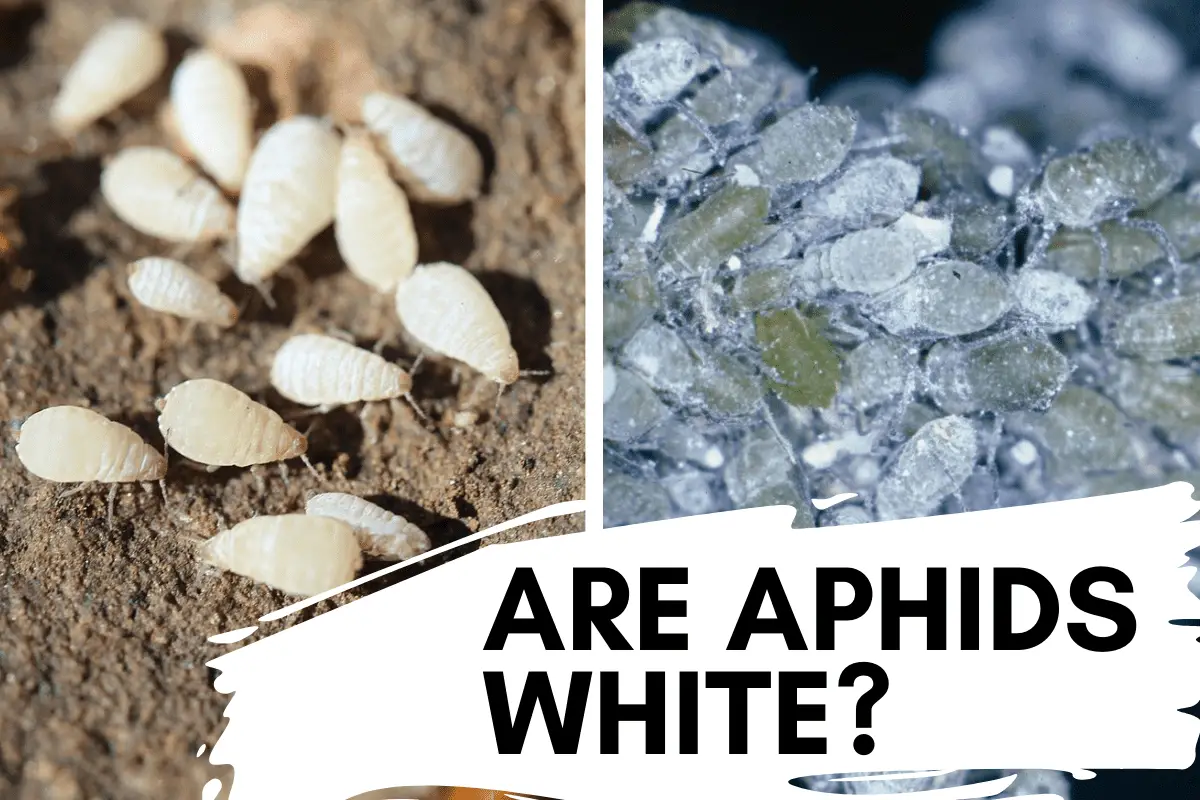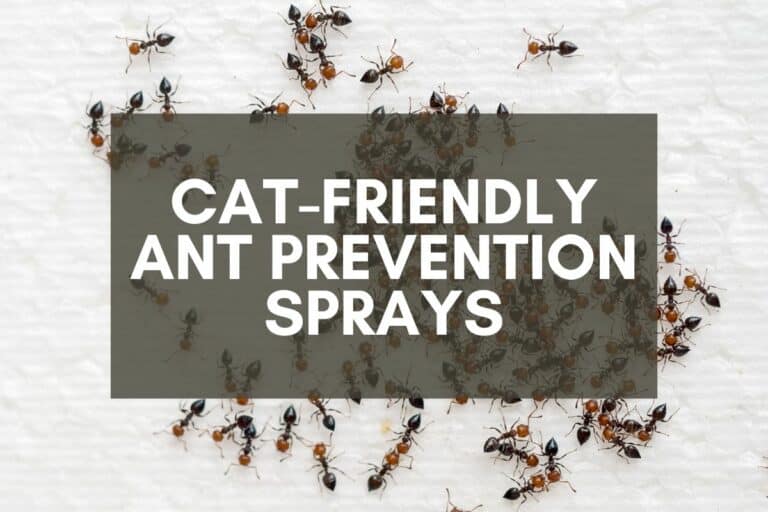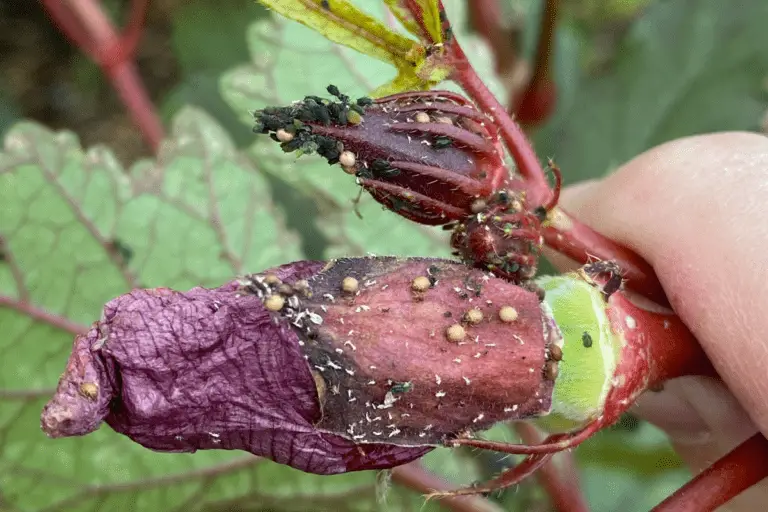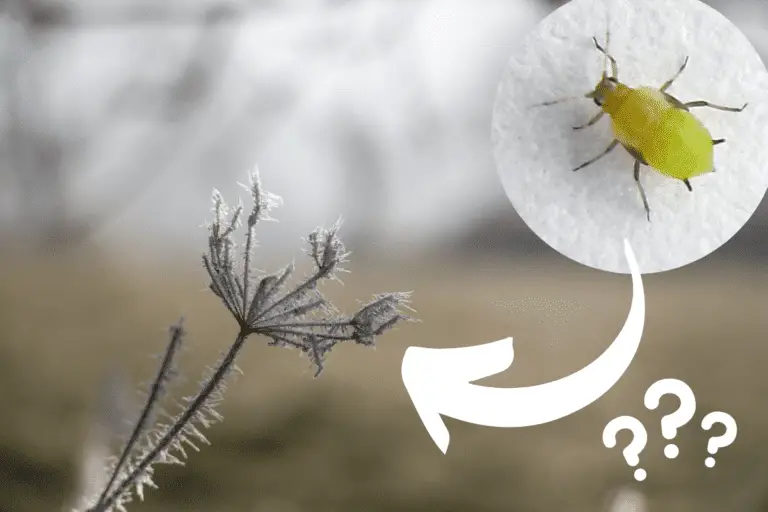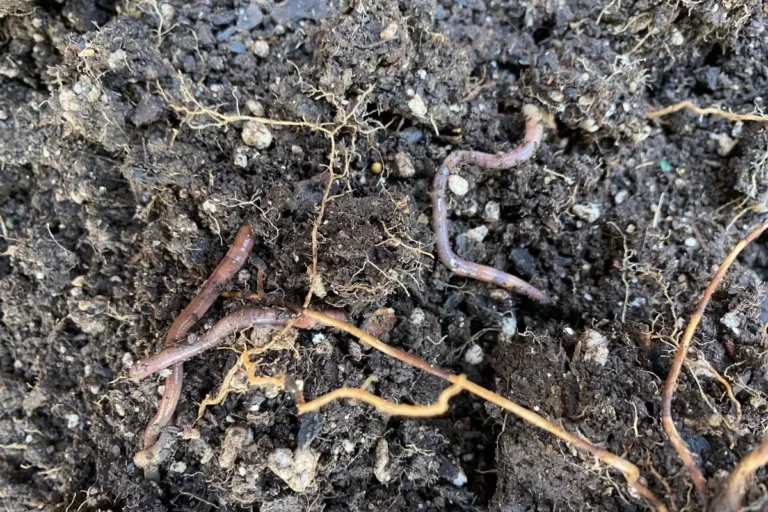Are Aphids White? How to Spot and Get Rid of White Aphids
If you’ve ever dealt with aphids, you’ve likely seen black and green varieties since those are the most common aphid colors. But have you ever seen white or whitish bugs–by themselves, in clusters, or scattered among black and green aphids–and wondered if they were aphids too?
Adult aphids are rarely white, but aphid nymphs and root aphids often appear whitish due to their pale, translucent colorations. Many aphids also produce waxy secretions that give their bodies a dull white sheen, and wooly aphids secrete a wool-like wax that often camouflages their natural colors.
But here’s the catch: Not all white-looking aphids are actually white aphids–for reasons I’ll explain in more detail below–and although root aphids are often whitish in color, they’re not actually aphids but a closely-related cousin species.
If you’ve noticed white-looking bugs on your plants and think they might be aphids, you’ll need to act quickly before your aphid infestation worsens.
Why Are Some Aphids White?
Before we take a look at a few reasons why certain aphids are white–and how easy it can be to misidentify aphids–here’s a list of aphids that often appear white or whitish:
| Kind | Color | Size |
|---|---|---|
| Amaranth Aphid | Green with White Wax | 1.2 – 1.6 mm |
| Artemisia Gall Aphid | Reddish Black with White Wax | 1 – 1.9 mm |
| Bamboo Aphid | Pale Yellow with White Wax | 1.7 – 2.4 mm |
| Chenopodium Aphid | Dark Green with White Wax | 1.5 – 2.9 mm |
| Daisy Root Aphid | Whitish and Pale Yellow | 2.5 – 3.3 mm |
| Large Wooly Aphid | Green with White Wax Wool | 1.3 – 2 mm |
| Maple Leaf-Nest Aphid | Pale Yellow with White Wax Wool | 3.5 – 4.5 mm |
| Mealy Apple Gall Aphids | Black with White Wax | 1.7 – 2.3 mm |
| Mealy Cabbage Aphid | Light Green with White Wax | 1.9 – 2.7 mm |
| Pine Wooly Aphid | Dark Red with White Wax Wool | 1 – 1.2 mm |
| Wooly Apple Aphid | Dark Red or Brown with White Wax Wool | 1.2 – 2.6 mm |
| Wooly Beech Aphid | Pale Green with White Wax Wool | 1 – 3 mm |
As you can see from the list above, aphids aren’t typically white in terms of their natural coloration–especially because they’re able to naturally produce their own pigments (using chemical compounds called carotenoids)–but they’ll often secrete white waxy substances that’ll make them appear white, especially wooly aphids that can generate so much wooly wax that they’ll end up looking like tiny little cotton balls.
There are two additional reasons why gardeners might think that they’ve stumbled across white aphids (even if they haven’t). Let’s start by taking a look at this photo:
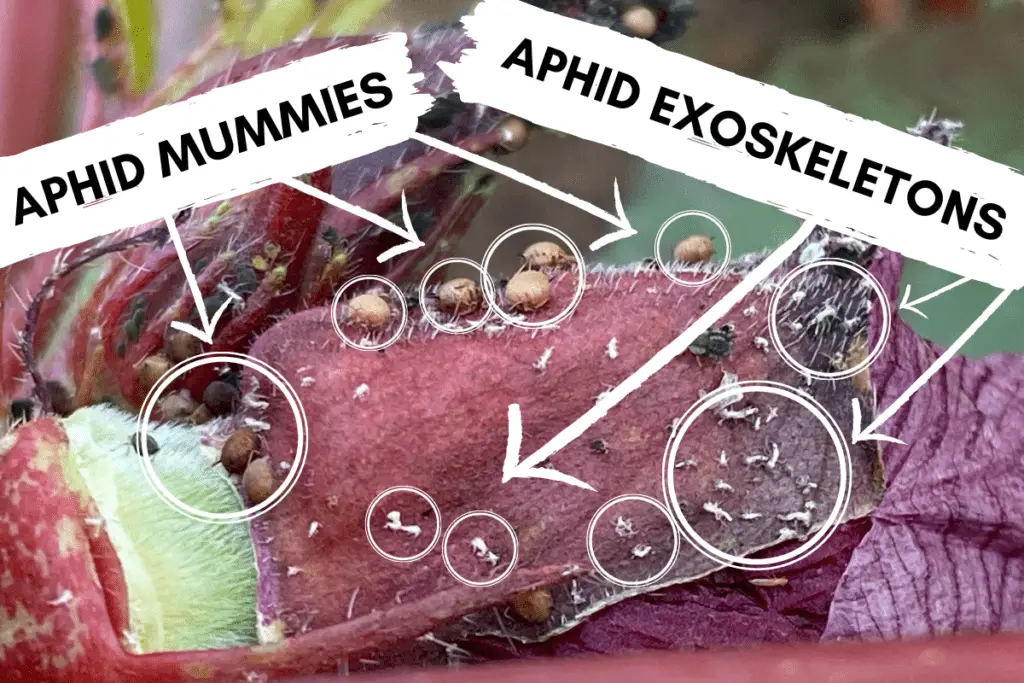
As you can see, I’d like to point out two things in particular so that you can become more adept at recognizing aphid infestations in your garden.
- Aphid Mummies: If you’ve noticed aphids on your plants and see some that look like they’re whitish and bloated, those are not white aphids. They’re actually aphids that have been mummified by aphid parasitoids, small beneficial wasps that lay their larvae inside aphids’ bodies. As the larvae develop, they kill the aphid, leaving behind a round whitish-bronze or brownish shell.
- Aphid Exoskeletons: Aphids leave behind their exoskeletons (called “exuviae”) as nymphs develop into adults, so if you notice little white insect-like flecks on your plants, don’t be fooled. Those aren’t white aphids. Those are just their exoskeletons. One interesting fact worth noting: Aphid exuviae function like decoys, providing aphids additional protection against parasitic predators.
So there you have it: If you notice clusters of whitish specks on plants in your garden, look closely and determine if you’re looking at aphids, aphid mummies, aphid exoskeletons, or something else entirely.
How Do You Get Rid of White Aphids?
In articles I’ve written on getting rid of black aphids and killing green aphids, I’ve laid out what I believe are the best approaches to stop aphid infestations.
For this article, I’ll share some thoughts on the water spray method–a popular but relatively ineffective method of aphid control–and I’ll suggest what is, for me, the most effective overall approach to getting rid of aphids.
The best way to get rid of aphids is to use a combination of neem oil and soap sprays. Spraying aphids with water is only partially effective–and then only if water is sprayed at fairly high pressures–because aphids can cling tightly to plant surfaces and thus resist the force of the spray.
You’ll see water sprays mentioned quite frequently around the gardening blogosphere, but the more I experiment with water, the less I like this particular approach.
To explain why, let me share what I did a few weeks back.
I had just harvested some Dinosaur and Red Russian kale from my garden when I noticed that there were quite a few spider mites and aphids (both green and black varieties) hiding on the undersides of the leaves.
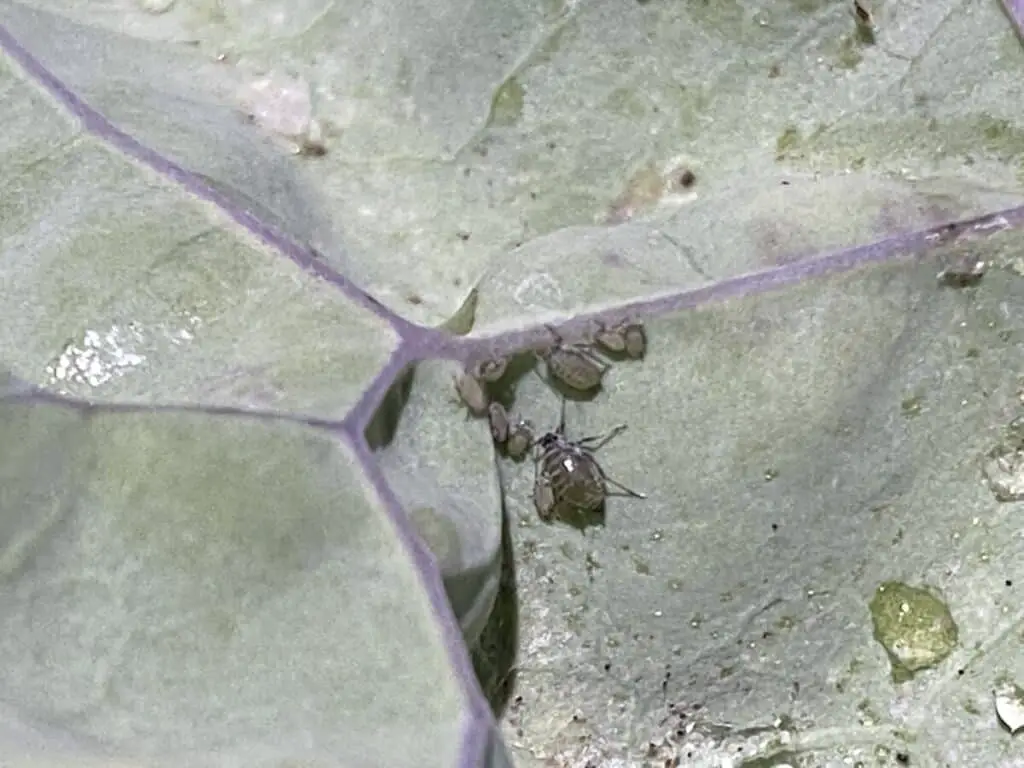
So I thought to myself, “What will it take to wash these aphids off the leaves?”
I first soaked the leaves in a bowl of water for a minute or so. That worked great for the spider mites, but for the aphids, it was completely ineffective. The aphids clung to the leaves and didn’t seem to care one bit about a short soaking.

I then found a leaf with a single aphid and decided to see what would happen if I put that leaf directly under steady-flowing tap water.
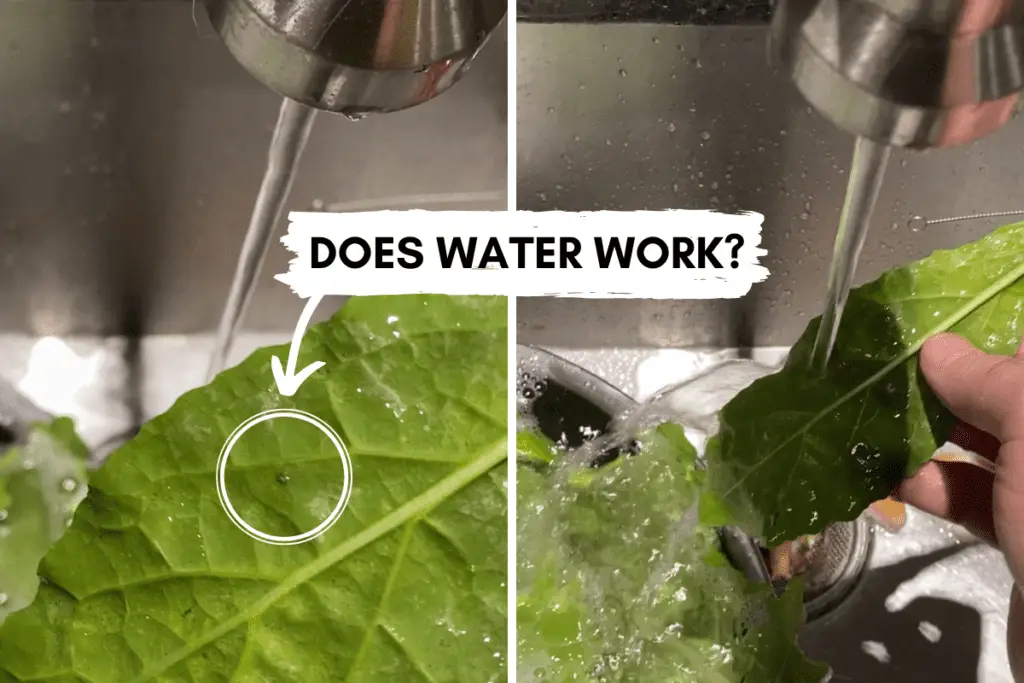
Here’s what I noticed:
- 1st Attempt: I tried a quick 1-second rinse. The aphid didn’t budge at all.
- 2nd Attempt: I tried another quick 1-second rinse. Again, the aphid didn’t budge.
- 3rd Attempt: I then tried a 2-second direct rinse. The aphid still held on to the leaf.
- 4th Attempt: I tried a 3-second direct rinse, which loosened the aphid’s grip because it moved roughly 2 inches from its original position (yet still clung to the leaf!).
- 5th Attempt: I followed this up with another direct 1-second rinse, and this finally dislodged the aphid.
I had turned the tap about 50% of the way on, so it wasn’t running at full blast, but the experiment revealed a few things about aphids:
- If you submerge aphids in water, you won’t immediately kill them. Aphids will need to remain submerged for several minutes before they’ll die, and even then, they might remain temporarily attached to the plant. If you’d like to avoid eating aphids, you’ll need to clean all plant leaves thoroughly.
- Using their legs–and possibly their mouthparts as well–aphids can retain their grip on plant foliage despite low to medium pressure from wind, rain, water, etc.
- To dislodge aphids completely, you’ll need to use high-pressure sprays. Water will do almost nothing to aphids unless applied at higher pressures or applied repeatedly at lower pressures to the same area of the plant.
As you can see, the water spray method will work (kind of), but it’s not the best approach to take when combating aphid infestations. If you want to kill white aphids more effectively–or any aphids, for that matter–I suggest using this intense 1-week approach instead:
| Schedule | Spray |
|---|---|
| Day 1 | Neem Oil |
| Day 2 | Soapy Water |
| Day 3 | Soapy Water |
| Day 4 | Soapy Water |
| Day 5 | Neem Oil |
| Day 6 | Soapy Water |
| Day 7 | Soapy Water |
I’ve written about using neem oil to kill spider mites, and in that article, I’ve provided my recipe for a powerful neem oil spray. The same recipe applies when creating a neem oil spray to kill aphids.
For those who think this is a bit much, please feel free to experiment with this model next time you see an aphid infestation. Personally, I prefer to interrupt the aphid life cycle as soon as possible since I don’t want them to reproduce or transmit diseases to my plants.
Simply put, I’d rather knock out the problem in 1 week than take a more laid back approach and risk further infestation.
Do White Aphids Live in Soil?
Aphids are members of the family Aphididae and typically live and reproduce on the branches and foliage of trees, shrubs, and plants of all kinds. However, a closely-related species known as “root aphids” (from the family Phylloxeridae) spend the entirety of their lives at the soil line or among plants’ roots.
Aphids are not typically found at or beneath the soil line, but root aphids are. Root aphids (Daktulosphaira vitifoliae) are pale, whitish aphid cousins who are a particularly destructive pest in grape-producing regions since they destroy both the leaves and roots of grape vines.
If you notice aphid-like insects at your soil line, or if you’ve pulled up a plant and noticed them on the plant’s roots, you’ll want to take special precautions to kill off any other root aphids that might be damaging your plants.
The best way to do so is to apply a pyrethrin-based product to your soil, then water it in gently. Keep this up every 2 weeks until you notice improvements in your plants.
If you don’t see any improvement, it’s probably best to remove the plant and dispose of it to avoid further soil contamination.
Are Dead Aphids White?
It’s relatively easy to confuse aphid exoskeletons with dead aphids and to then assume that dead aphids turn white, but this isn’t the case.
Dead aphids do not turn white. Unless they’ve been killed by aphid parasitoid larvae–which cause their bodies to distend and turn a light brownish color–they’ll retain their pigmentation for a short period of time before their bodies dry out and decompose.
In case you’re wondering, this is what a dead aphid looks like:
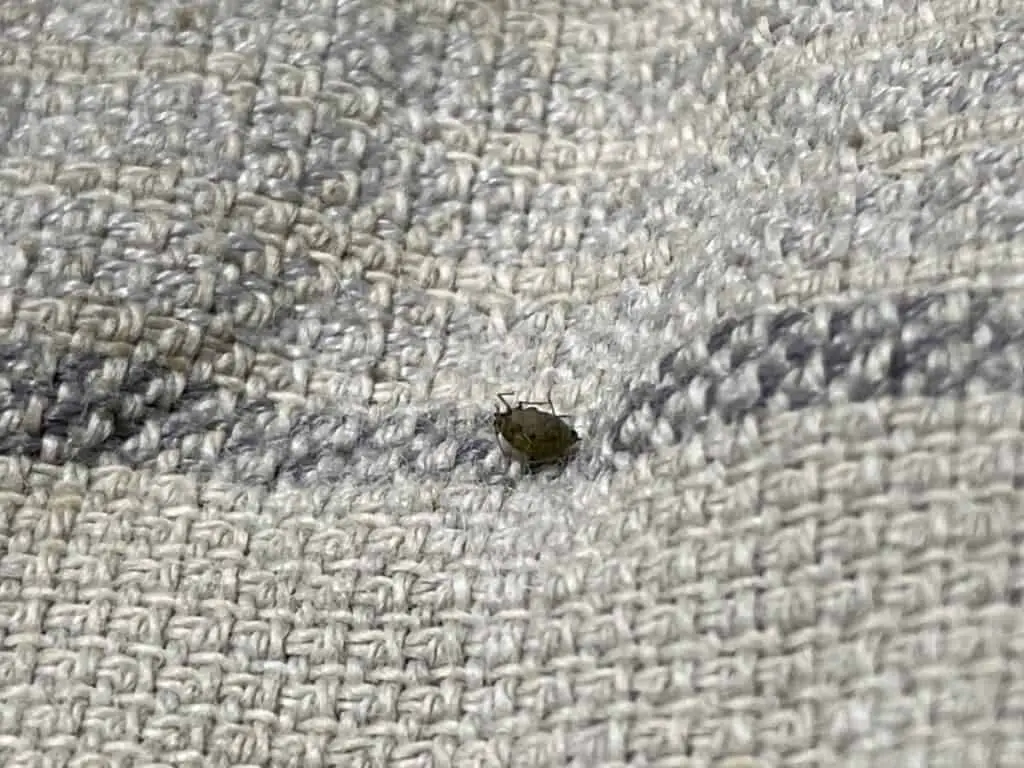
I had placed some kale on a towel prior to washing, and when I picked up the kale leaves, I noticed a few black specks on the towel. I zoomed in with my camera, and sure enough, one of tiny spots was a dead black aphid.
I left it there that evening and checked again the next morning. In terms of color, I noticed no changes whatsoever. If I had left it there for several days, it’d probably change color as it disintegrated, but I wasn’t interested in testing out that hypothesis.
As the above suggests, if you think you’ve found dead white aphids in your garden, pay close attention because you might think you’re seeing white aphids when you’re seeing something else entirely.
The featured image at the top of this page shows root aphids (photo from Cornell University) and mealy cabbage aphids (photographed by Siefried Keller). Special thanks to the folks at Influential Points for providing insights about the lengths of particular aphid species.
